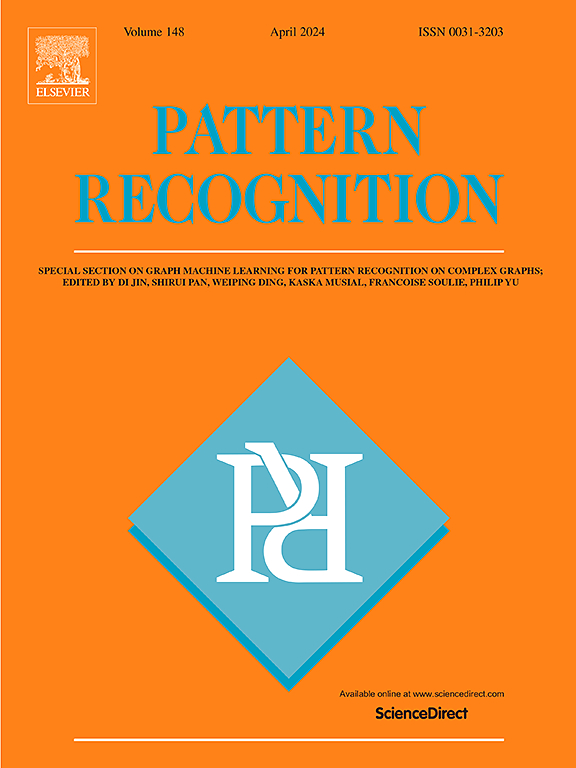IDEAL: Independent domain embedding augmentation learning
IF 7.5
1区 计算机科学
Q1 COMPUTER SCIENCE, ARTIFICIAL INTELLIGENCE
引用次数: 0
Abstract
Deep metric learning is fundamental to open-set pattern recognition and has become a focal point of research in recent years. Significant efforts have been devoted to designing sampling, mining, and weighting strategies within algorithmic-level deep metric learning (DML) loss objectives. However, less attention has been paid to input-level but essential data transformations. In this paper, we develop a novel mechanism, independent domain embedding augmentation learning (IDEAL) method. It can simultaneously learn multiple independent embedding spaces for multiple domains generated by predefined data transformations. Our IDEAL is orthogonal to existing DML techniques and can be seamlessly combined with one DML approach for enhanced performance. Empirical results on visual retrieval tasks demonstrate the superiority of the proposed method. For instance, IDEAL significantly improves the performance of both Multi-Similarity (MS) Loss and Hypergraph-Induced Semantic Tuplet (HIST) loss. Specifically, it boosts the Recall from 84.5% 87.1% for MS Loss on Cars-196 and from 65.8% 69.5% on CUB-200. Similarly, for HIST loss, IDEAL improves the performance on Cars-196 from 87.4% 90.3%, on CUB-200 from 69.7% to 72.3%. It significantly outperforms methods using basic network architectures (e.g., ResNet-50, BN-Inception), such as XBM and Intra-Batch. The source code of our proposed method is available at https://github.com/emdata-ailab/Ideal-learning.
理想:独立域嵌入增强学习
深度度量学习是开放集模式识别的基础,是近年来研究的热点。在算法级深度度量学习(DML)损失目标中设计采样、挖掘和加权策略已经投入了大量的努力。然而,对输入级但必要的数据转换的关注较少。在本文中,我们开发了一种新的机制——独立域嵌入增强学习(IDEAL)方法。它可以同时学习由预定义数据转换生成的多个域的多个独立嵌入空间。我们的IDEAL与现有的DML技术是正交的,可以与一种DML方法无缝结合以增强性能。视觉检索任务的实验结果证明了该方法的优越性。例如,IDEAL显著提高了多相似度(MS)丢失和超图诱导语义元组(HIST)丢失的性能。具体来说,汽车-196的MS损失率从84.5%→87.1%,CUB-200的MS损失率从65.8%→69.5%分别提高了Recall@1。同样,对于HIST损失,IDEAL将Cars-196的性能从87.4%提高到90.3%,将cu -200的性能从69.7%提高到72.3%。它明显优于使用基本网络架构(例如,ResNet-50, BN-Inception)的方法,例如XBM和Intra-Batch。我们提出的方法的源代码可在https://github.com/emdata-ailab/Ideal-learning上获得。
本文章由计算机程序翻译,如有差异,请以英文原文为准。
求助全文
约1分钟内获得全文
求助全文
来源期刊

Pattern Recognition
工程技术-工程:电子与电气
CiteScore
14.40
自引率
16.20%
发文量
683
审稿时长
5.6 months
期刊介绍:
The field of Pattern Recognition is both mature and rapidly evolving, playing a crucial role in various related fields such as computer vision, image processing, text analysis, and neural networks. It closely intersects with machine learning and is being applied in emerging areas like biometrics, bioinformatics, multimedia data analysis, and data science. The journal Pattern Recognition, established half a century ago during the early days of computer science, has since grown significantly in scope and influence.
 求助内容:
求助内容: 应助结果提醒方式:
应助结果提醒方式:


